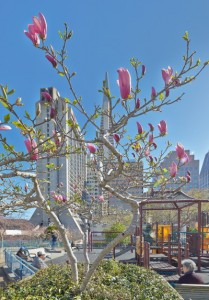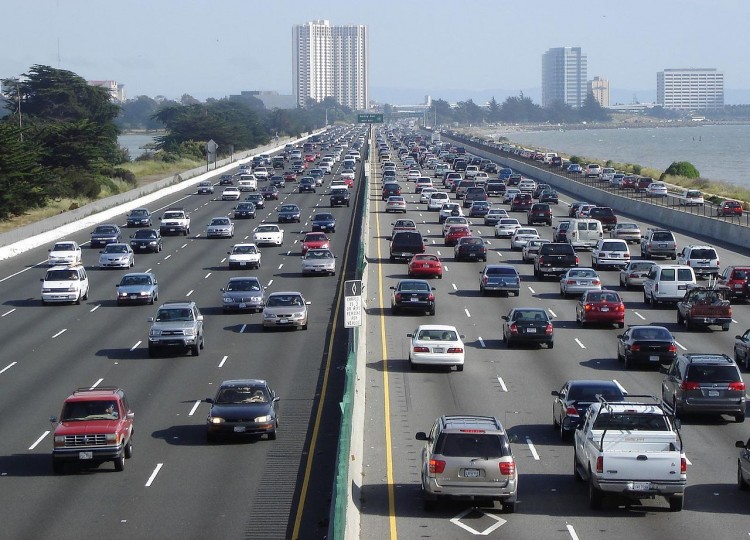David Goldstein, Energy Program Co-Director, San Francisco
Protecting the environment often requires reforming how business is regulated by government. In some cases, this requires increased regulation. But this blog describes a major example of how it can go the other way. We all want smarter land use and transportation planning that can provide more affordable housing, offer choices in transportation and housing that are not widely available today, and reduce the costs and environmental impacts of transportation.
NRDC wants to minimize the need to rely on cars by offering options for walking, transit, and biking that are convenient and affordable.
Consumers would prefer the option to live in places where personal transportation costs a lot less than its current level of about $10,000 a year (about one fifth of household expenditures for everything).
Developers would like the option of building more houses and shops on less land, and of having fewer restrictions and costs imposed on them by governments. The broader business community shares these concerns.
Conservatives would also support a lighter hand of government—allowing businesses more freedom to use their property as they see fit without excessive regulation–not to mention lower government costs for highways and roads.
Progressives would rather see new housing constructed such that it is more likely to get a
 diversity of services, public facilities such as parks, and income levels in a given neighborhood.
diversity of services, public facilities such as parks, and income levels in a given neighborhood.
The elderly and disabled and our children—people who cannot drive cars–would prefer areas where they did not need to be dependent on others to drive them to where they wanted to go, but would rather have neighborhoods where they could travel independently without driving.
Organized labor, or just people who want jobs, would like all the new jobs created by building new homes and stores, and by manufacturing the components that go into them, and also benefit from the jobs created when the occupants, who may be saving $500 a month on car expenses, find that they can afford to have a beer at the pub or a pizza at the restaurant that they couldn’t have afforded before, and the outlets hire new bartenders, servers, cooks, and cleaners.
And cities and suburbs would be happy to see new development strengthen their tax base.
So why has this been happening so slowly? One obscure but important reason is that the environmental review process, which was intended to inform government decisionmakers about the potential adverse environmental effects of projects and how to mitigate them or find better projects, has ended up doing the opposite.
Suppose a developer proposes to build a multifamily housing project near a light rail station that offers residents local shopping, restaurants, and jobs, and will reduce the need to drive by more than two thirds compared to the same development at the urban fringe. If the environmental review process worked right, this project would sail through review while the sprawl project would face serious questions.
Unfortunately that is not how it has worked in America. In practice, environmental review focuses on the potential “level of service” (LOS) of local roads and freeways near the project. The “service” they are referring to is free-flowing car traffic. If the project is modeled as increasing traffic congestion, environmental review can force the developer to scale the project back, reducing the amount of housing and services and jobs, and raising the cost of housing, while forcing residents who want to live there and take the train to shop and work instead to live in a car-dependent remote area.
This is silly for a number of reasons. First, the models used for traffic are not very reliable for transit-oriented development—they predict impacts that never occur in real life. Second, time wasted in traffic may be irritating to people, but it is not an environmental impact. Or, to put it another way, free-flowing traffic often just encourages people to drive even more…until congestion stops things again, but at a higher level of traffic and pollution. Third, the mitigation measures that are proposed for traffic congestion relief don’t make sense—things like widening roads (meaning, for projects such as this, narrowing sidewalks or eliminating public space that could otherwise have been used for a park). Thus a project that features the advantages of less car dependence has many of these advantages taken away for “environmental” reasons.
But most of all, these “environmental impacts” that don’t actually impact the environment have caused many projects to be canceled. The result has been increased car dependence and dirty air, and their consequent impacts on mortality. (Auto accidents and the types of heart disease and cancer that are linked to bad air quality are some of the largest causes of death in the United States.)
It is even worse for transportation projects. A bike lane or bus rapid transit project that self-evidently reduces driving and pollution has to mitigate impacts on car traffic, or prove at great expense that they don’t exist. (The project still would require environmental review, because the construction process itself might generate impacts, or the details of the project design may have other environmental problems. But the review would no longer consider effects on traffic congestion to be an environmental problem.)
Fortunately the California Legislature has now solved this problem. My colleague Amanda Eaken explains how in this blog.
The net result is a dramatic change in how hard it will be to construct environmentally beneficial housing and shopping and transportation projects.
It also shows in a very specific case how policies that enhance environmental quality create jobs and economic development.
Related articles








